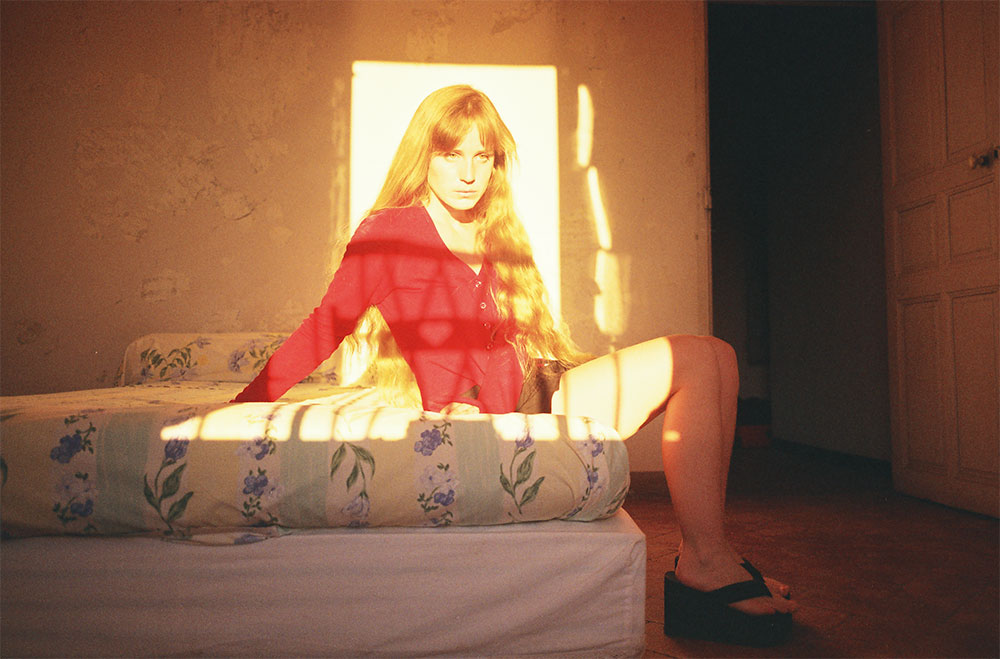
While researching The (Unofficial) Op Shop Awards, writer and photographer Constance McDonald received many delightful stories of secondhand finds - she shares them, below.
I learnt to carry Vicks VapoRub in my pocket as a teenager when I was a caregiver, after school, at a rest home. I’d apply a thin film beneath my nose so I could respond to any bodily event without my face giving me away. I spent my earnings at op shops in Ōtepoti.
I bought a sweater around the time of David Bain's 2009 retrial. Images of him wearing the famously garish homemade sweaters, during the original 1995 trial, were being shared widely. My $1 sweater was a relic adorned with hearts and flowers.
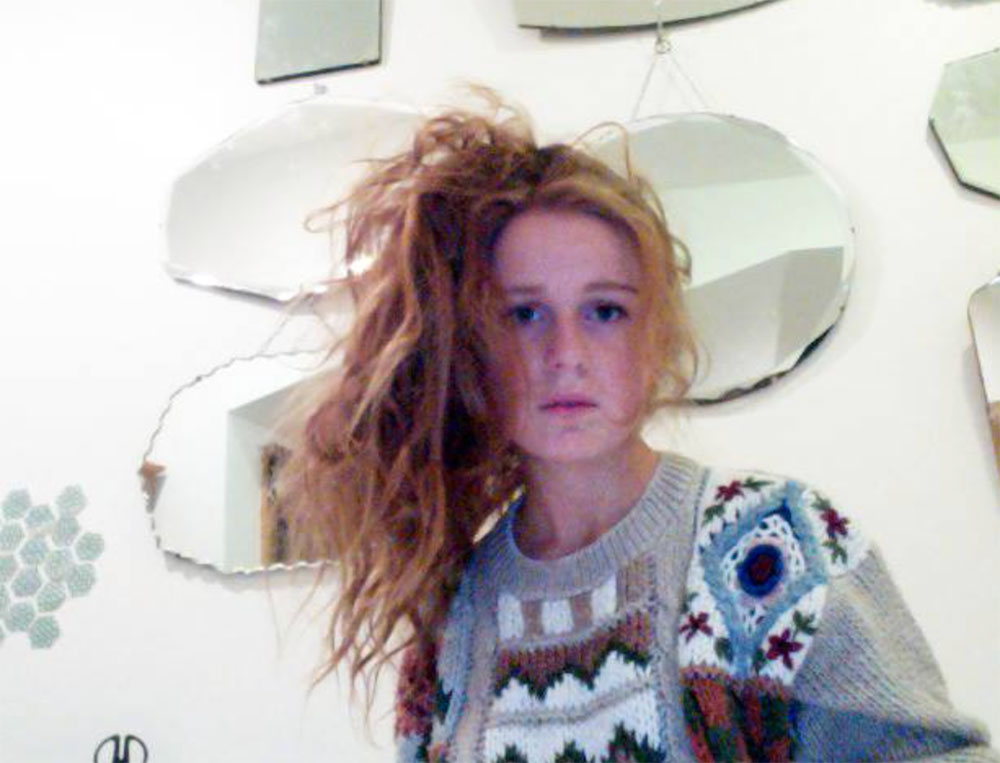
Then, I got into wedding dresses. I would wear, on family road trips, a 1930s 100% silk wedding dress, in ivory, purchased at the Wānaka Salvation Army op shop for $10. I would slip away to take self-portraits by the sea while my family waited in the car. When the dress ripped, I'd repair it, and then it would tear in a different spot.
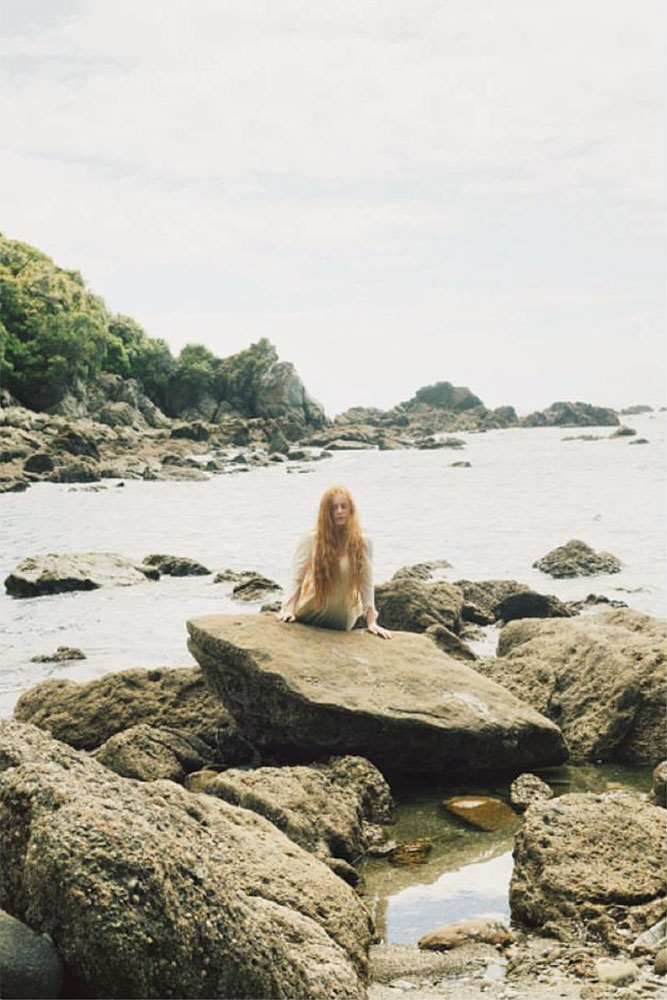
Just before departing for my university exchange in England I bought a leopard print plush jacket. It felt like wearing the pelt of a soft toy won at TimeZone with millions of tickets. I donned it almost daily, including on a trip to Iceland with my friend, Elizabeth. We got lost in a snowstorm, and as morale and temperatures plummeted, I resorted to eating a worm in an attempt to lift our spirits.
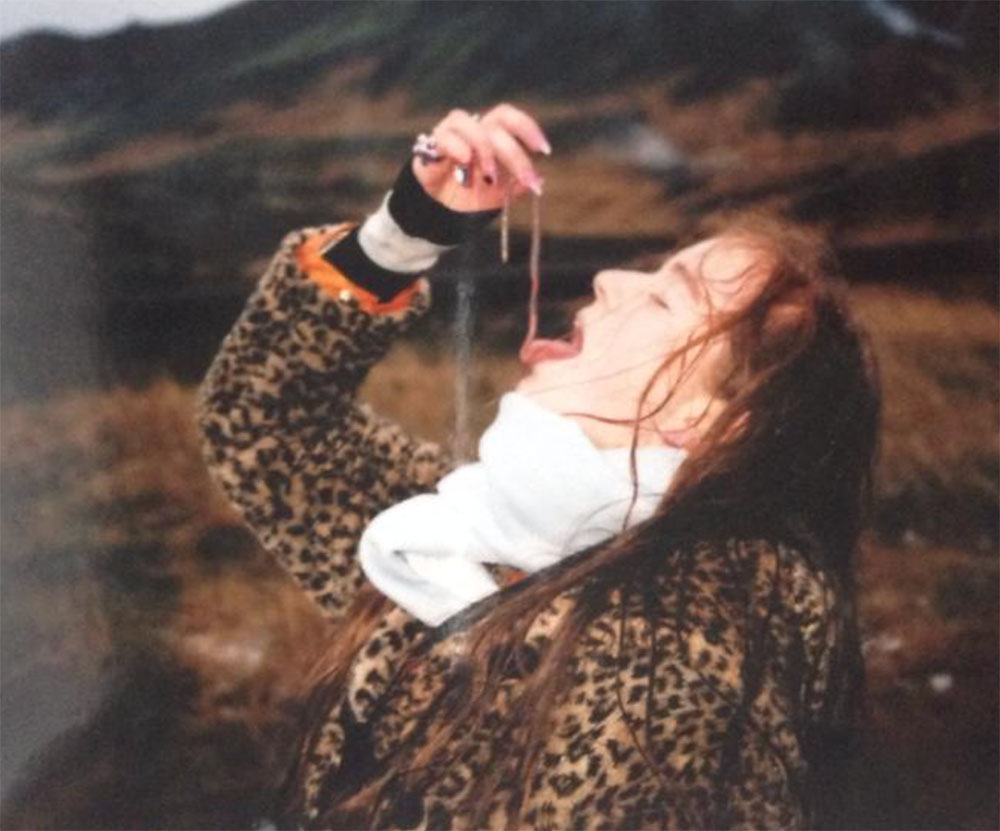
I can never pass up on a well-made wicker basket, or a locally-made Glassons long sleeve merino.
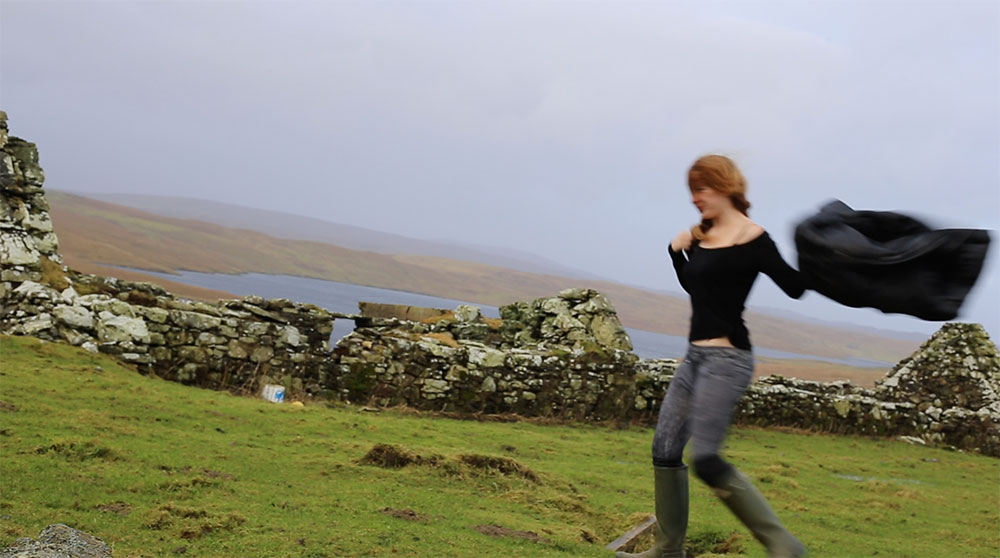
I find silk pieces and print them with words from my diary: 'You cannot touch me I am in another universe'.
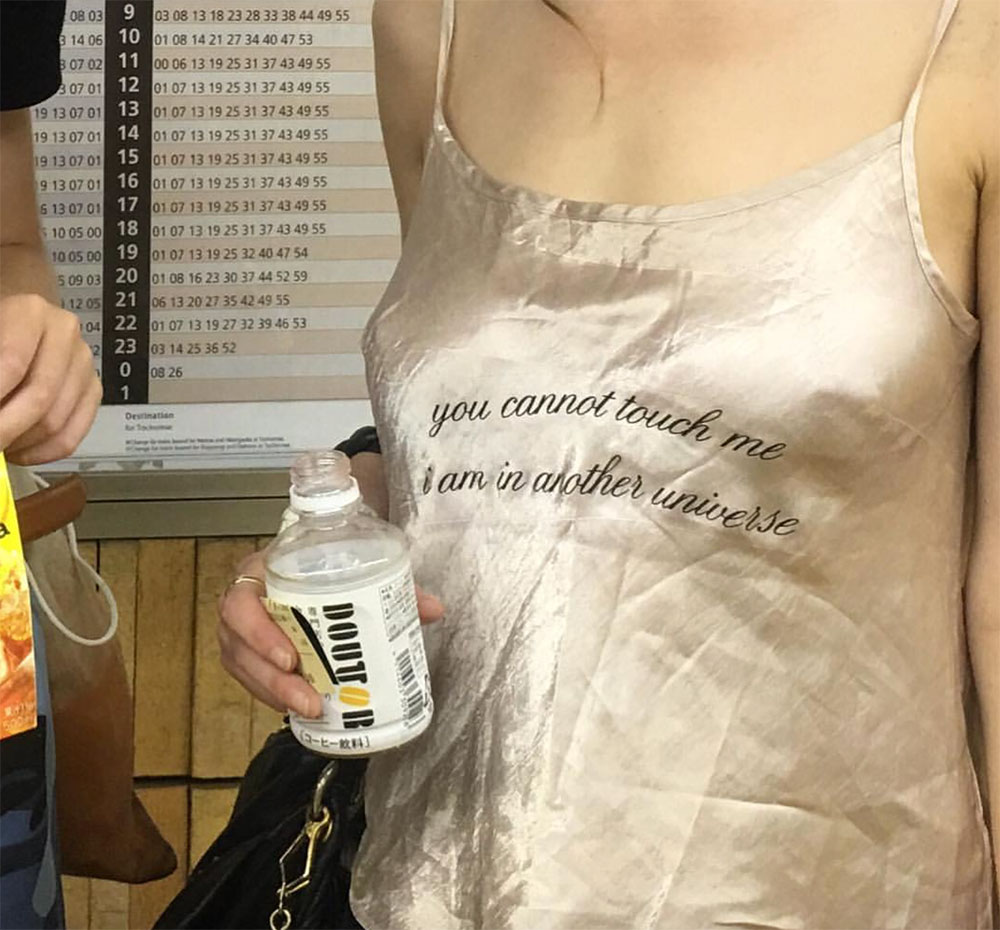
Of course, it is not all miracles and epiphanies… I will never forgive my teen-self’s ethics for passing up the opportunity to purchase a 100-year-old full-length seal-skin trench coat.
Oh, and that rite of op shop passage: buying a platform shoe that crumbles on its first wear. A suddenly unstable heel. You turn around to find a Hansel and Gretel crumb-trail behind you in New World. You gotta pay $5 to the Red Cross for the privilege of learning about ‘dry rot’.

The Devotees
I posed a question, with curiosity and a due date, to some fellow op shop devotees, and my inbox swelled with small love letters about how it feels to find the pre-loved, and love them again (and again).
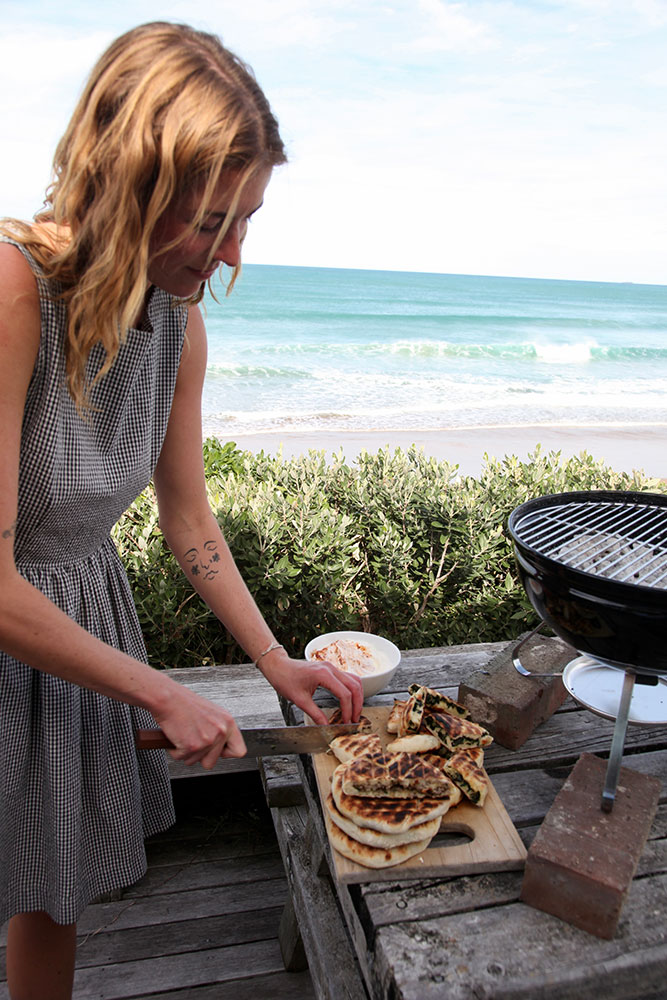
Rose Langbein, author and chef, discovered this dress during “an iconic summer” in 2014. She’d just returned from Southeast Asia, confessed her feelings to a crush, and was heading to Laneway Festival.
The dress travelled with her, in a van, from Perth to Melbourne, marking the beginning of their decade-long journey together through “so many chapters” of her life.
The dress has accompanied her to Melbourne, Paris, NYC, and now Lisbon. “It’s become this reminder of who I was, and still am. It feels like me. It holds so many memories.”
Its label reads ‘Holiday In’, a sentiment and wording she backs due to it feeling “very quintessentially dated, and yet, somehow timeless. It matches the style of the dress perfectly, and how I want to feel when I’m wearing it.”
When op shopping, Rose looks for “luxurious fabrics,” and is always seeking “a silk shirt or cashmere jumper.”

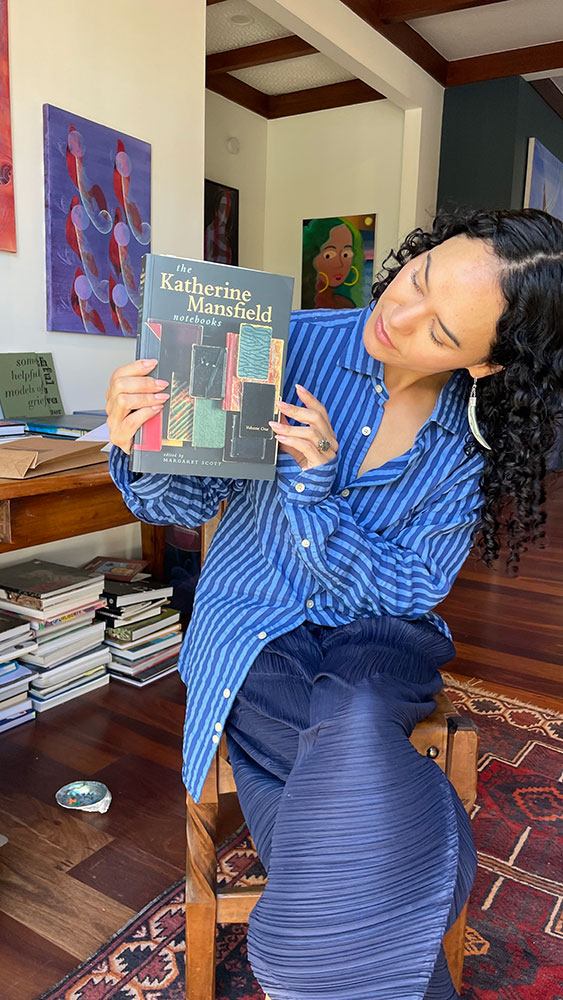
Jade Townsend, artist and gallerist, spotted Volumes 1 & 2 of The Katherine Mansfield Notebooks at Devonport Salvation Army for $2. "I haven't started to read them yet but they are next in the queue."
When op shopping, Jade heads “straight to the pukapuka section,” searching for “art books, Māori history and language publications, memoirs or encyclopaedia style books for the kids.” Books are her guilt-free purchase. Her “whare is scattered with piles of them,” constantly loaned and passed between friends with shared research interests.
While her husband collects Penguin classics, Jade gravitates toward “fashion, textiles and exhibition publications.”
She enjoys finding “alternative or original artwork covers that have since changed. The current print versions are often more graphic and focus on the title rather than a lovely painterly artistic cover.” She owns multiple copies of The Bone People by Keri Hulme, each with different sleeves.

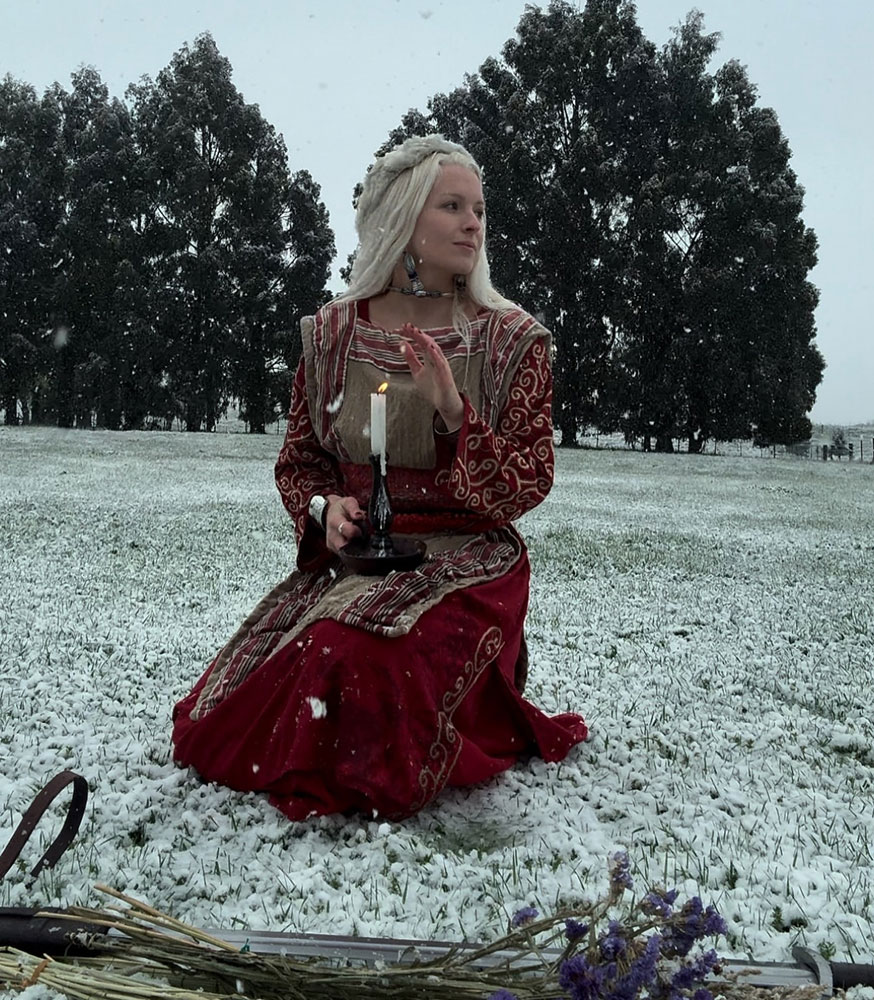
Kiki Rockwell, musician, found this dress at a Hospice shop in Auckland for around $10, about a year ago.
“When I saw it hanging there it didn't look like much, in fact it looked a bit ugly, but I knew that with the right styling, it could be an incredible base.”
Kiki is comprehensive, she shops “the entire store.” She has found “swords forged of real metal, wooden viking shields, beautifully woven folk art, vintage spinning wheels, leather riding boots.” 90% of her wardrobe is sourced from op shops discovered while on her “knees rummaging through a dusty box."
“Put on those headphones and enjoy the hunt. Look in the drawers, in the curtain/fabric sections, look at the belts, and the homeware.”

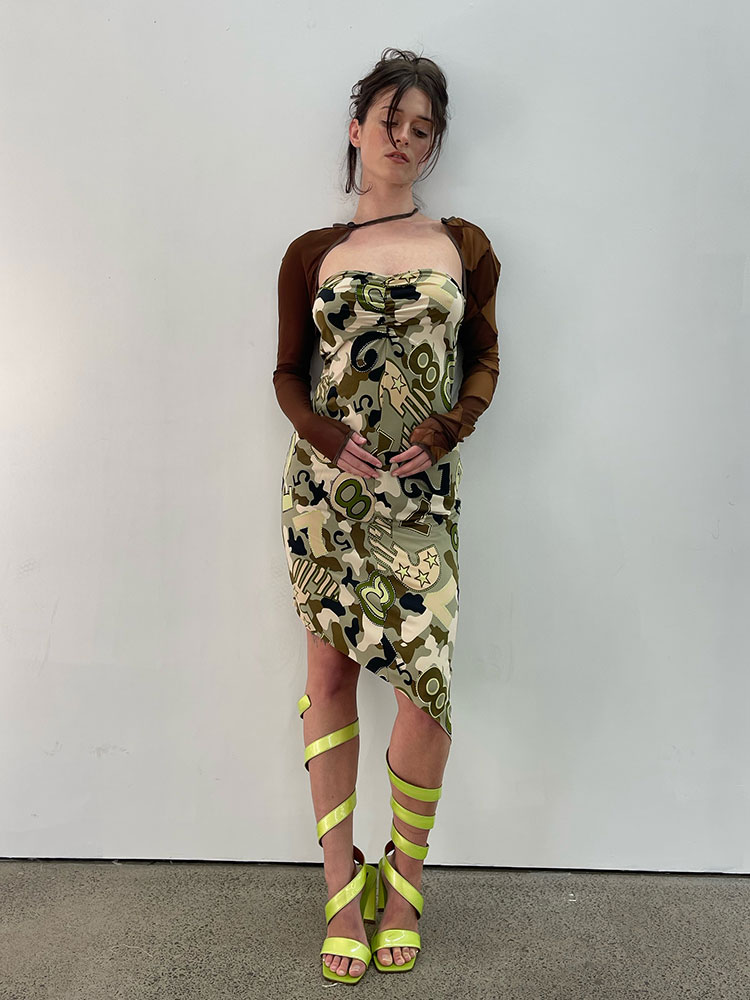
Catherine Boddy, fashion designer, chanced upon this stretch lycra fabric, a collision of camouflage and numbers, at an op shop in Nelson a couple of years ago. “It’s pretty cooked. I feel like it was originally used in a preschool learning environment.”
The $6, two-metre piece brought her “hours of fun and a challenge, trying to decide what to make with such a limited amount.”
She created a dress and top from the fabric, both of which sold immediately. “Everyone wanted the pieces, but I couldn’t make any more. That’s the thing about using recycled fabrics. If someone wants a custom piece, you can’t just go back to the shop and buy more off the roll.”
She still has “a tiny scrap left” that she plans to make into something for herself.
At an op shop “the fabric and haberdashery section is of course my go-to. I am trying to be environmentally friendly in my practice, and the quality of these older fabrics is really good.”

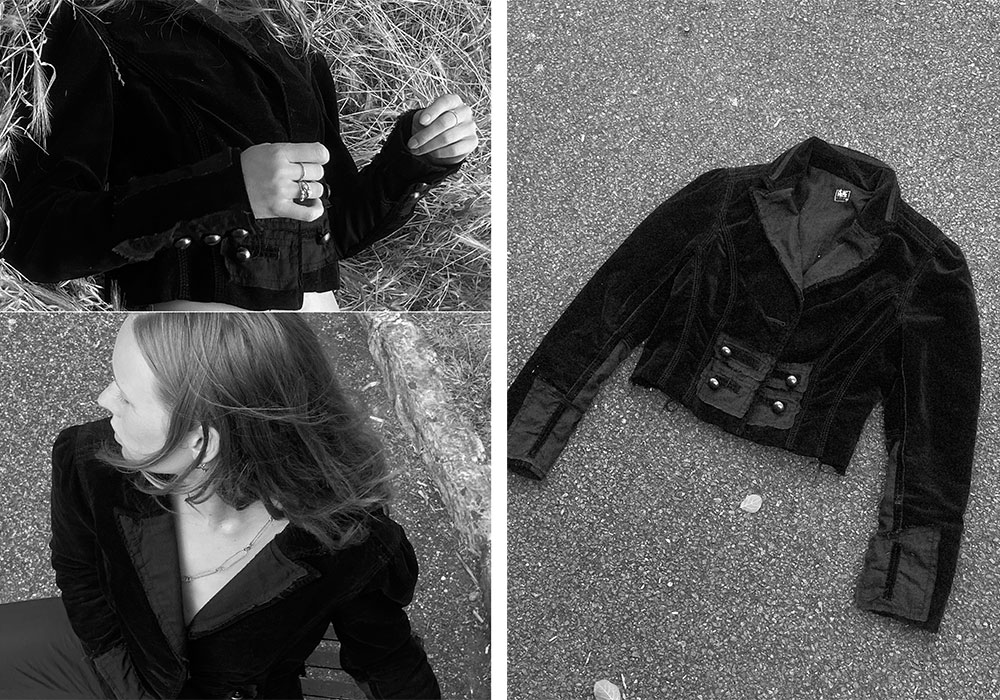
Grace Mirams, artist, stumbled upon this $4 jacket in Dargaville, when en route to Northland.
“There’s a lovely selection of op shops there, all with old school prices. I remember I had such a big day at the shops that I ended up staying for Friday night karaoke at the pub.”
“I loved the structure of this jacket, it almost felt like a piece from the local theatre. It was originally long with a tail and everything, but it fit my shoulders perfectly.”
Once home, Grace transformed the piece to suit her style. “I cut the bottom off so it’s now worn cropped.”
Her approach to op shopping: “I always have luck with jackets. I look at both men’s and women’s sections, thinking about how I can alter them (cutting, hemming) to suit my wardrobe. I’m always looking out for vintage Glassons made in NZ, Marilyn Sainty, Nom*D.”

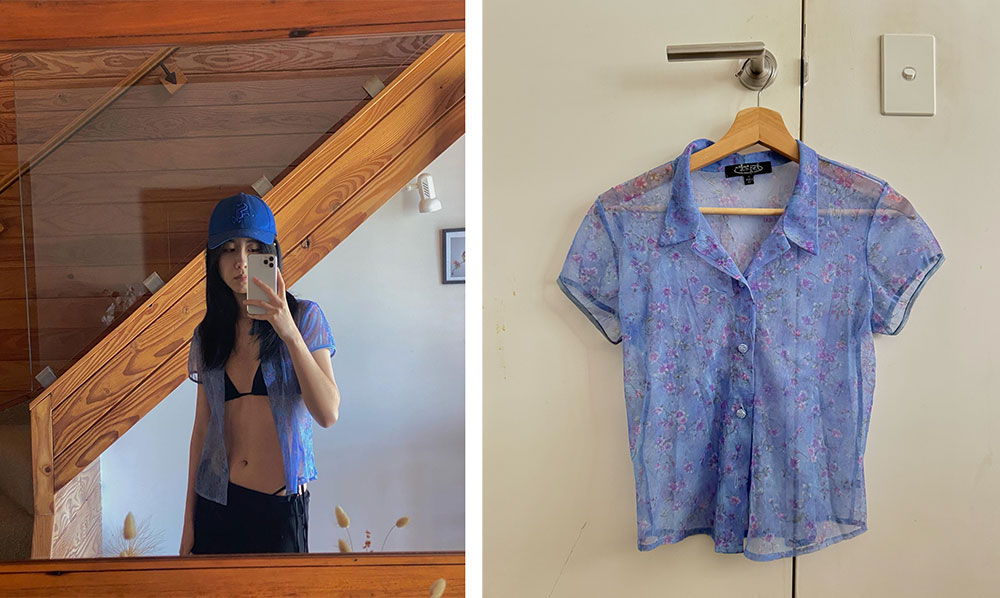
Jenny Gao, writer, shares one of her all-time favourite finds: an Urban Angel sheer top with “little rose buttons in matching blue”, purchased just as she “came off a hectic work project, and was keen to party just as ambitiously.”
Urban Angel, Pumpkin Patch's defunct brand for tweens and teens, was “the epitome of chic. Sassy, elegant, alluding to an attitude without being gauche,” says Jenny. “NZ/Aus-made clothes from the 2000s are great quality, with lasting power.”

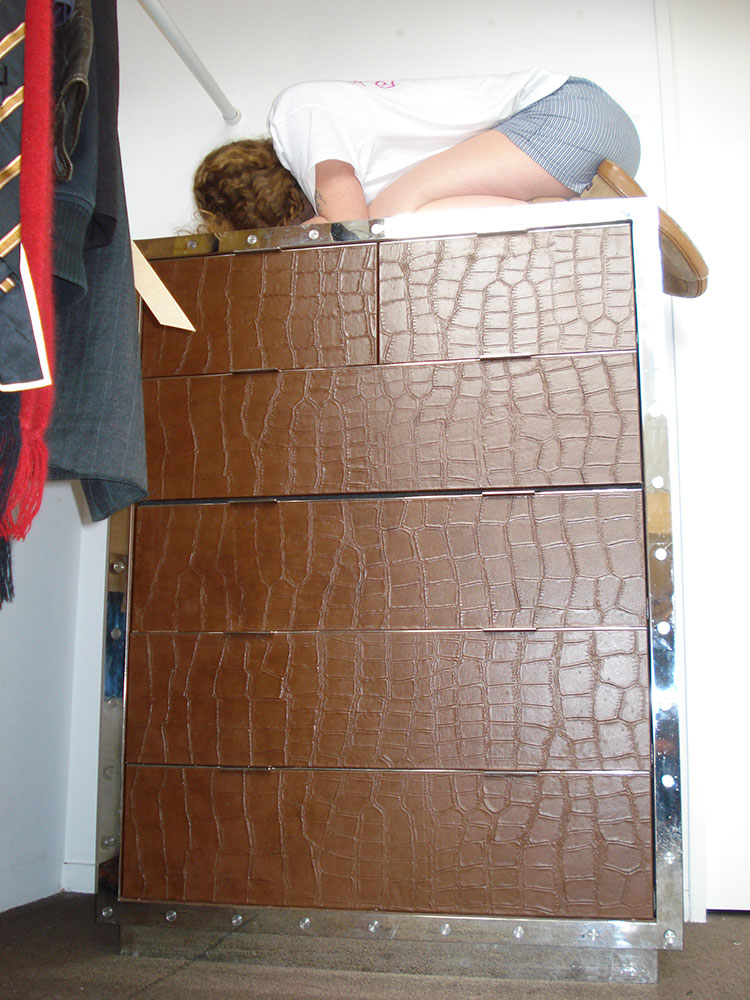
Eliza Baker, costumer, has a penchant for well-made, one-of-one pieces constructed with unexpected materials. Her drawers, bought secondhand, feature “carpet inners, crocodile-embossed leather, and stainless steel frames.”
“If I were a set of drawers, I believe I would be these.”
When op shopping, Eliza gravitates toward the haberdashery section, on the lookout for “odd buttons, zips, beads” because these often have “much more personality than most notions you can buy new.”

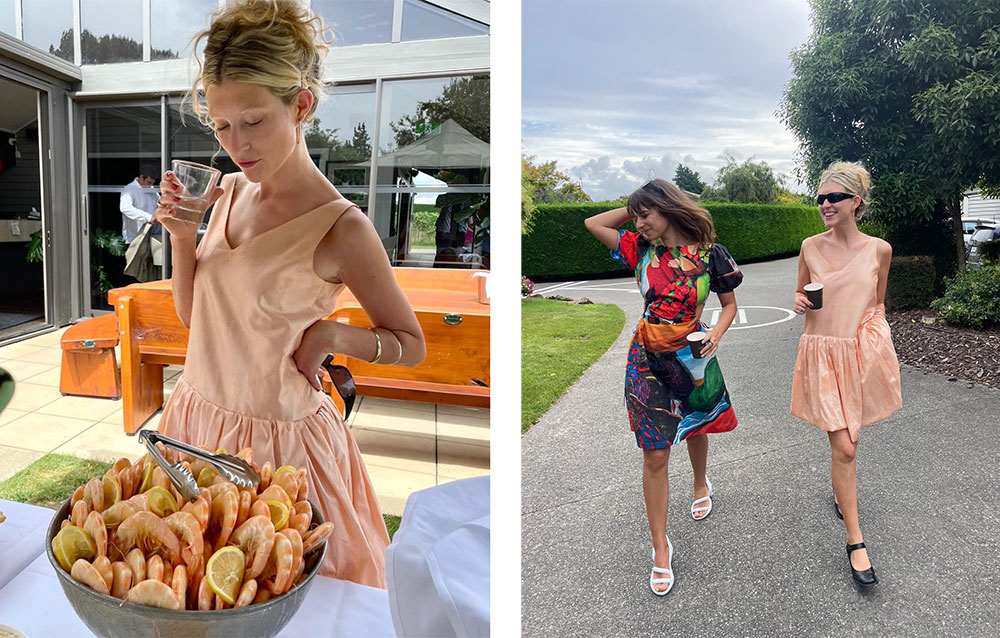
Eugie Boyd, who works for a perfumery in sales and events, bought this drop-waisted, floor length gown about a decade ago at an op shop.“The blush pink faux taffeta reminded me of something from Courtney Love’s style colour palette, so I copped. I’d wear it to get coffee, to vacuum my room, constantly tripping on the hem.”
The night before a friend’s wedding, in a wardrobe panic, Eugie decided to stitch the hem all the way up into the dropped waist, creating its bubble shape, and a mid-thigh hemline.
When secondhand shopping she does so “impractically, always bought on impulse from a gut feeling: think hot pants and gold club dresses.”
“Because of this ad-hoc but instinctive approach to thrifting, this gown somehow outlasted many of my terrible style eras, and instead only makes me think of celebrations and fun, with all my favourite people in the world. It is a perfect artifact of my twenties.”

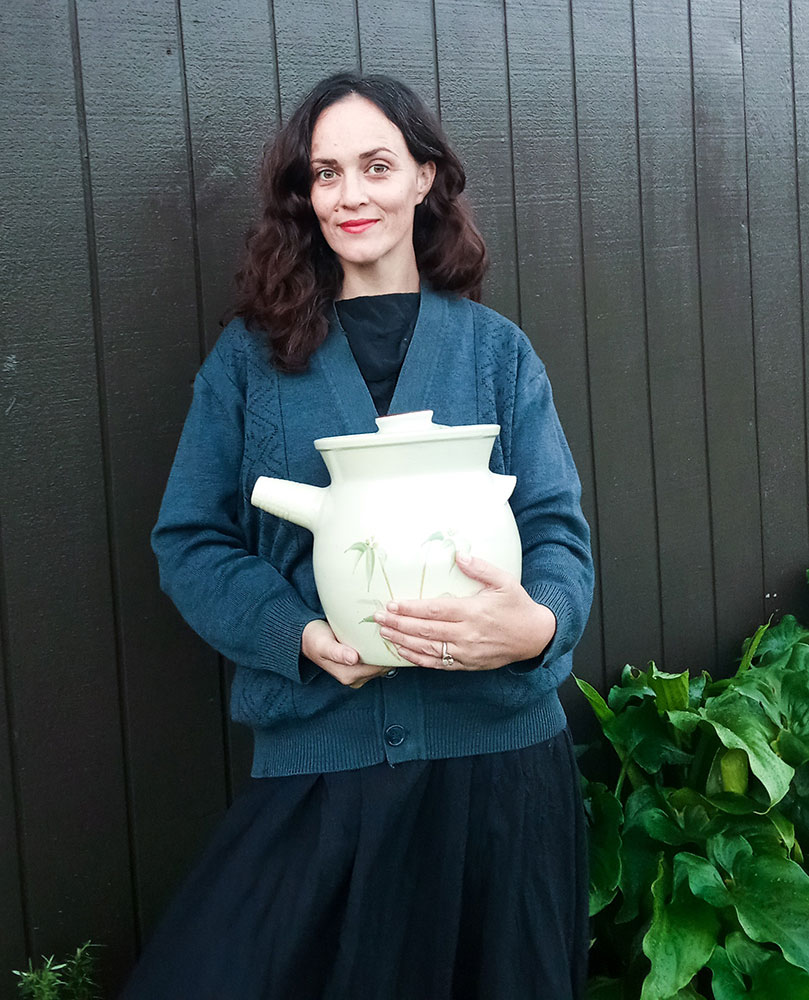
Nat Peri, silversmith, recently watched an Instagram reel where Mei Liao (@daywithmei) was showcasing her 120-year-old pickle jar that had been handed down through five generations.
“The next time I walked into the op shop it was there, on the shelf, obviously just for me,” Nat tells me, of her Sichuan clay pickle jar, purchased for $10.
“Now I'm dreaming of growing vegetables and herbs to start fermentation and also enjoying the research into traditional Chinese Paocai recipes.”
Nat approaches op shopping with the strategy of going “straight for the homewares section to find vintage glassware, and 90's ceramics and pottery.” When looking for clothing she starts in the men’s section, where she seeks out “natural, hard wearing quality fabrics like cotton, linen and NZ wool.”

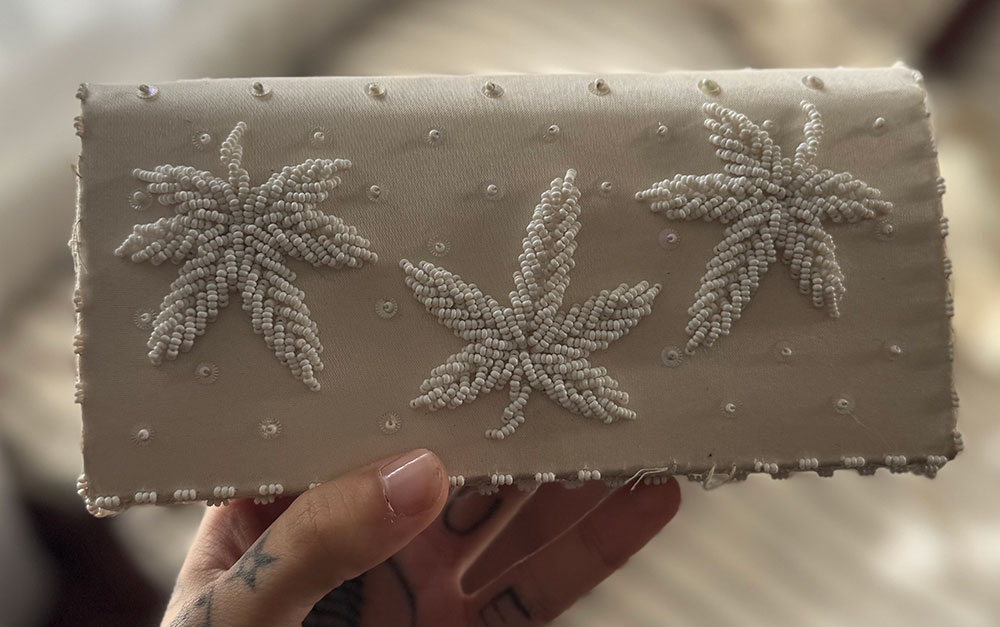
Alma Proença, tattooist and ceramicist, recently found the perfect vessel for her housemate: a beaded weed container “to hold all the tools necessary for rolling” that strikes “a great balance of being both naff and elegant.”
Alma is drawn to “trinkets, small figurines, CDs and tableware,” and explains, “there was a period where I drove an old Corolla that didn't have Bluetooth or an aux port, so I became incredibly obsessive in my CD collecting.”
Her porcelain figurines, accumulated over many years, are an eclectic cast of characters “a black horse, a kitten playing with a ball of yarn, a panther, a few swans, and a number of clowns.”

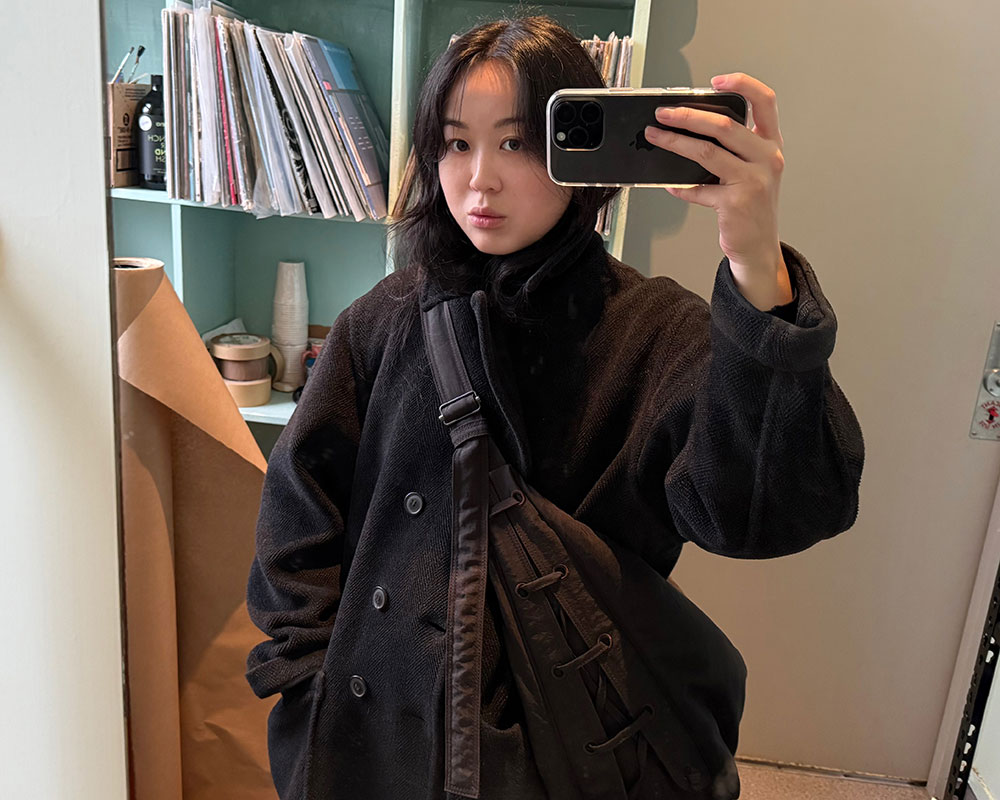
Shannen Young, jewellery designer, inherited her men’s A.P.C. wool coat from her sister, who bought it in an op shop in Karori, a decade ago.
“I would always borrow it over the years. When she decided to part with it… I happily took it.”
She loves how the oversized coat brings a contrast to her outfits. “It’s as if I was running out the house and mistakenly took someone else’s jacket. I love how many things you can carry in the pockets. I don’t need a bag when I wear this coat.”
Her op shopping focus shifts over time; from lace tablecloths to men’s jeans and art books. Currently she’s drawn to the jewellery section.

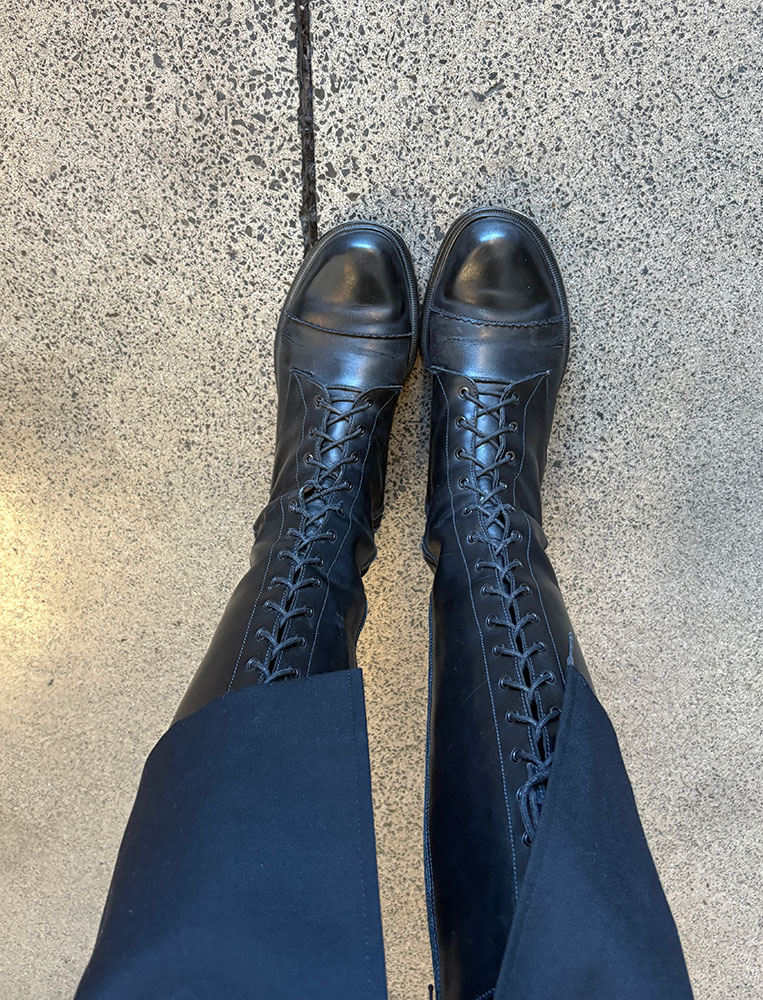
Isabelle Carson, who works in fashion PR, finally found a grail item: these Minnie Cooper boots, after “multiple years searching” for a pair in her size.
She paid $130, acknowledging it’s “not a bargain, but a price I am willing to pay for an iconic shoe by an iconic New Zealand brand.”
The universe seemed to validate her purchase, when just days after receiving the boots, the New Zealand Fashion Museum (shout out Doris) posted a piece, by Emma Gleason, detailing Minnie Cooper’s history, and her exact boots appeared in the header image.
Her approach to secondhand shopping is methodical rather than spontaneous: “I am not really a browser, I shop with specific pieces in mind and I don’t tend to stray from them.”

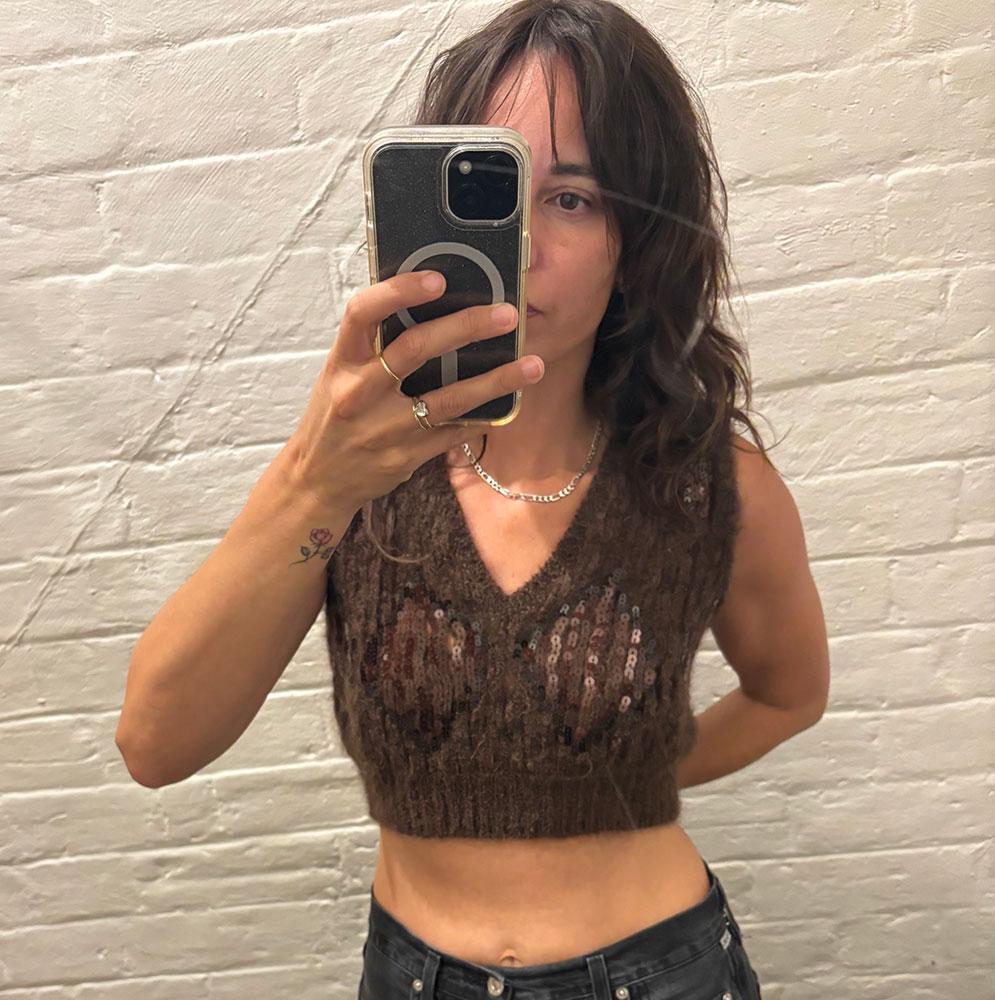
Milly Hewat-Wall, co-founder and director of PR and creative agency Someday Studios, happened upon this Brunello Cucinelli mohair-blend piece, and despite it being “the middle of summer and the last thing I needed was a wool vest,” something about it peeking out among the sweaters caught her eye.
“It looked great and I needed it. It’s got little brown and bronze sequins in the thread.”
The vest, which would have retailed for $1,500 or more, is versatile. “It’s great on its own, but also layered.“
Milly’s specialty when secondhand shopping is sniffing out “Dries [van Noten] jackets. I’ll usually be able to spot a Dries print tucked in a rack from across the room.”
Recently, at a secondhand clothing sale run by friends Rachel Mills and Dominique Healy, she bought a Dries van Noten piece that had belonged to Derya Parlak: “a beautiful floral print from his Spring 2015 which is one of my all-time favourite shows. (Look it up. It’s the one with the forest floor carpet runway).”

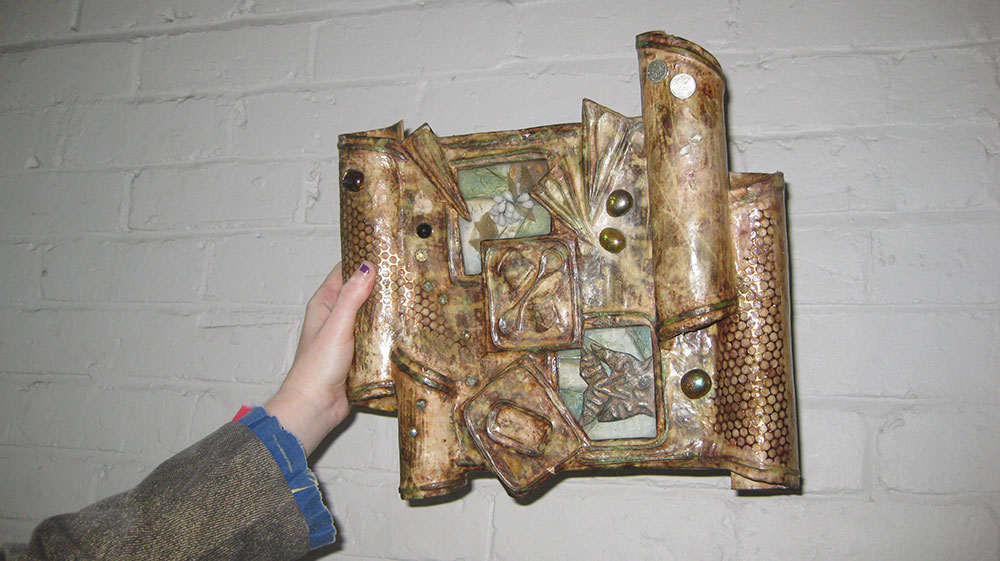
Jess Robins, arts coordinator, acquired this mixed media sculpture, for $5, at The Tip Shop in Ōwhiro Bay, Wellington, around December 2016.
The papier-mâché structure “appears to be built around toilet or paper towel rolls, embedded with jewelry pieces, and pebbles,” encased in a resin outer shell. She describes it as “quite horrific, but there’s something alluring about it, and I can’t let it go.”
Her op shop wish list: “I’m always looking for mid-century plastic furniture, wine glasses, a resin ball with a flower inside, a glittery costume jewellery brooch. I love chairs.”
She loves the miscellaneous section. “The area where you’ll find those tall jars with vegetables preserved in oil, trinket boxes, candles made of gel, ceramic tiles with quotes on them.”

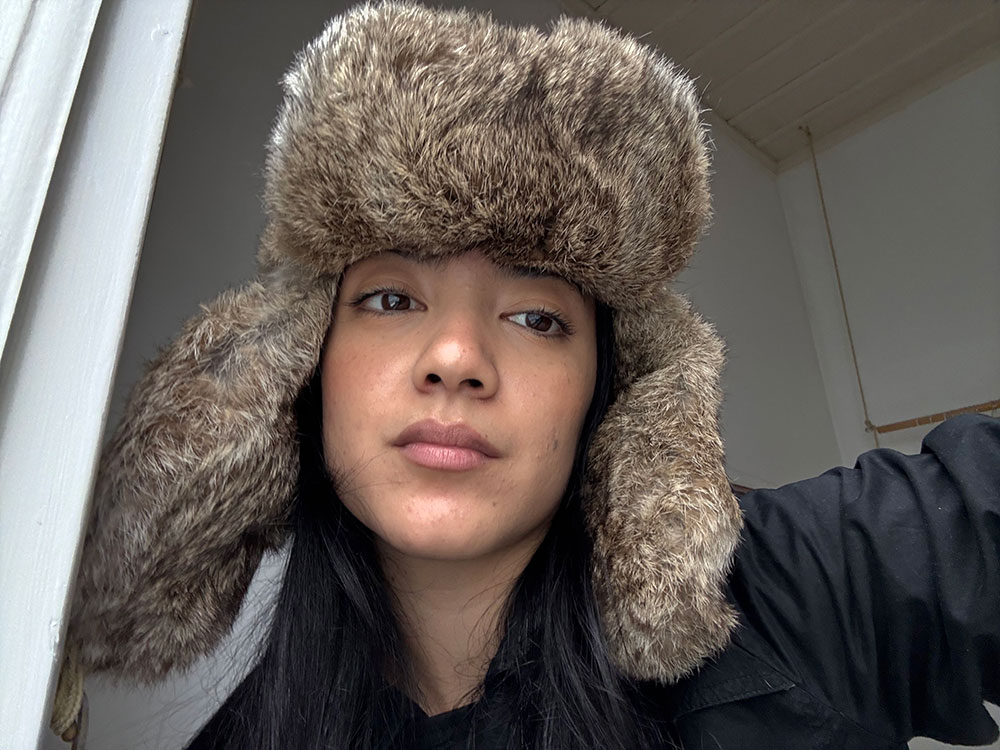
Kirana Gaeta, actor, celebrated her birthday with an op shop crawl in the North Shore with her best friend and boyfriend. At St John’s op shop in Wairau Valley, this $7 rabbit fur hat called her name.
“It’s incredibly cosy and warm, and makes me feel safe. You can completely hug your entire face with fur or buckle the ears to the top and have a whole fur moment on the top of your head.”
She’d recently bought a similar version in Japan but “it just didn’t have the fullness this one has.”
She’d been lamenting about the Japanese hat’s inadequacy to her boyfriend, “who is king of op shopping.” He said to her, “I just know we are going to find the proper thing today. I have a really good feeling.”
At their final op shop stop of the day, there it was. “Op shop manifestation is real.”

‘Op shop’ is short for ‘opportunity shop’ named for both the opportunity to buy secondhand goods, and the opportunity for charities to raise funds. But you knew that.
Op shops also offer the opportunity to be a sweetheart. One of my life's greatest joys lies in thinking of others while I sift through thousands of items. It is the art of recall: remembering and referencing details, stories and experiences, and reaching into this reservoir. It is finding crystal glasses for your friend who's been talking about hosting cocktail parties, or a vintage t-shirt featuring artwork by the painter they wrote about in their master's thesis.
Be a sweetheart as you dig and fill, and through it all, get to know, and love your taste. Someone, somewhere, right now, is letting go of exactly what you are looking for.

.jpg)




